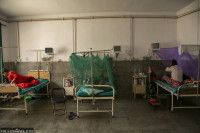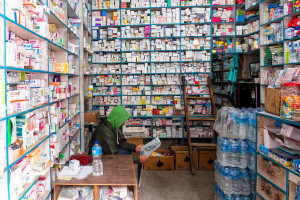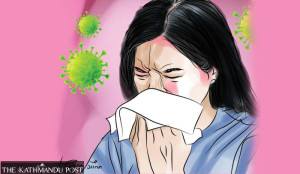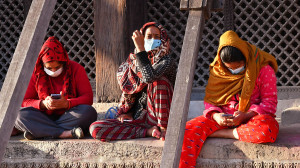Health
Nepal eliminates highly contagious viral disease rubella: WHO
It is serious particularly for pregnant women as infection can lead to miscarriage, stillbirth, or a range of lifelong and debilitating birth defects, the UN agency says.
Post Report
Nepal has eliminated rubella, a highly contagious viral disease as a public health problem, the World Health Organisation, announced on Monday.
The UN health body in its statement said that it is a remarkable achievement for a country making concerted efforts to protect its people from vaccine preventable diseases.
Rubella, or German measles, is a highly contagious viral infection. It is serious particularly for pregnant women as infection can lead to miscarriage, stillbirth, or a range of lifelong and debilitating birth defects. But rubella is preventable with safe and cost-effective vaccines.
“Nepal’s success reflects the unwavering commitment of its leadership, persistent efforts of the health care workers and volunteers, and unstinting support of engaged and informed communities, for a healthy start for babies and a future free of rubella disease,” said Dr Catharina Boehme, officer-in-charge WHO South-East Asia, while endorsing the recommendation of the Regional Verification Commission for Measles and Rubella elimination in South-East Asia Region (SEA-RVC) for Nepal to be verified for eliminating rubella.
The SEA-RVC which held its annual meeting from July 22-24, 2025, reviewed and evaluated information and data submitted by the national verification committee on measles and rubella disease surveillance and immunisation coverage rates, and recommended verification of rubella elimination in Nepal.
Nepal is the sixth country in WHO South-East Asia to achieve rubella elimination. Prioritising elimination of measles and rubella as public health problems in WHO South-East Asia by 2026, Bhutan, DPR Korea, Maldives, and Timor-Leste have eliminated measles, and Bhutan, DPR Korea, Maldives, Sri Lanka, Timor- Leste, and now Nepal have eliminated rubella.
“Congratulations to Nepal for eliminating rubella. This public health achievement is the result of close collaboration between the government, dedicated health workers, partners and communities,” said Dr Rajesh Sambhajirao Pandav, WHO Representative to Nepal. “WHO is proud to have contributed to this journey and remains committed to supporting Nepal sustain this accomplishment.”
Nepal introduced rubella-containing vaccine in its immunisation programme in 2012 with a nationwide campaign for the age group 9 months to 15 years. A second dose of rubella-containing vaccine was added to the routine immunisation schedule in 2016.
Four national campaigns with rubella vaccines in 2012, 2016, 2020, and 2024, helped increase access, despite major public health emergencies such as the COVID-19 pandemic and earthquakes in 2015 and 2023. By 2024, Nepal achieved over 95 percent coverage for at least one dose of rubella vaccine.
Innovative strategies such as observing ‘immunisation month’, outreach to vaccinate missed children, and motivation for the districts to be declared ‘fully immunised’, provided further impetus to elimination efforts.
To further strengthen surveillance, Nepal recently introduced a robust laboratory testing algorithm, the first in the WHO South-East Asia Region to do so.




 10.12°C Kathmandu
10.12°C Kathmandu











%20(1).jpg&w=300&height=200)

